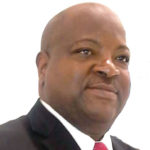THERE are anticipations that at the Monetary Policy Committee (MPC) meeting slated for March 26 and 27, members might consider further monetary tightening or hold rates steady to watch the effect of last meetings interest rate hike.
Recall that the first MPC meeting for the year concluded with votes to raise the benchmark Monetary Policy Rate (MPR) by 400bps to 22.75percent, recalibrate the asymmetric corridor around the MPR to +100/-700bps from +100/-300bps, and move Cash Reserve Ratio (CRR) up 12.5ppts to 45.0percent. Given that the hike was implemented in late February, its impact was not noticeable in the latest CPI update, which was published in March for price changes in the preceding month.
The decision of the MPC was in line with global trends.
The Bank of England governor disclosed, that the apex Bank of England would hold rates at 5.25 percent as it signaled its edging closer to dovish rates as inflation in February dropped to 3.4 percent, the lowest since February 2021.
In its March 2024 meeting, the ECB also left its rates on hold, with the main refinancing rate at 4.5 percent, which remains the highest in 22 years, while the marginal lending rate stood at 4.75 percent.
Concurrently, the Norwegian central bank on Thursday, March 21, 2024 also kept its key interest rate unchanged at 4.5 percent but signaled it could start cutting later this year.
These decisions come on the heels of the US Reserve Bank’s decision to leave the key interest rate steady at 5.25 percent but left open the door to three interest rate cuts before the end of the year for the fifth consecutive time. The US decision to hold rates comes after the recent rise in inflation to 3.2 percent in February 2024.
Analysts expect more rates to remain on hold as inflation figures remain above the two percent target.
“For Nigeria, we anticipate further tightening of policy rate although other key parameters are likely to be left at current levels.
“First, we imagine that the committee would prefer a course of action that indicates unwavering commitment to tackling inflation. We project that their assessment of risks from unchecked inflation would take precedence over the potential cost of hiking rates on réal sector financing, Notably, resilient GDP data for FY-2023 would likely provide comfort as the economy was up 27percent year on year (yly) despite 225 basis points (bps) jack-up of MPR in 2023,” experts from Lagos-based Afrinvest (West) Africa Limited stated in an e-mail note.
Furthermore, analysts suspect that the improvement in oil sector performance is reinforcing optimism for firm output expansion in 2024 (CBN: 3.3856, FG 3.88 percent, IMF. 3.0 percent, World Bank. 3.30 percent), providing legroom for further hikes.
According to Afrinvest, the MPC may consider that delays in rate cuts by advanced markets could heighten competition for scarce global capital in developing markets Except for the US where inflation rose to 3.2percent in February, data indicates that major economies continue to make progress in steering inflation lower.
“In summary, we anticipate between 100-200bps rate hike this week. That said, we recommend a hold decision as a more appropriate path considering the strong interest rate hike less than a month ago “Notably, inflation is driven by monetary and structural factors. While February’s hawkish move gradually curbs worisome money supply growth (assuming CBN maintains strong stance against unconstrained fiscal interventions and undue real sector Interventions), the fiscal authorities must rise to the occasion.
“This two pronged approach is necessary to prevent excessive and ineffective utilisation of monetary policy for non-monetary inflation drivers,” the experts recommended.
ALSO READ: FG, NAFDAC to ban syringe imports, boost local manufacturing






